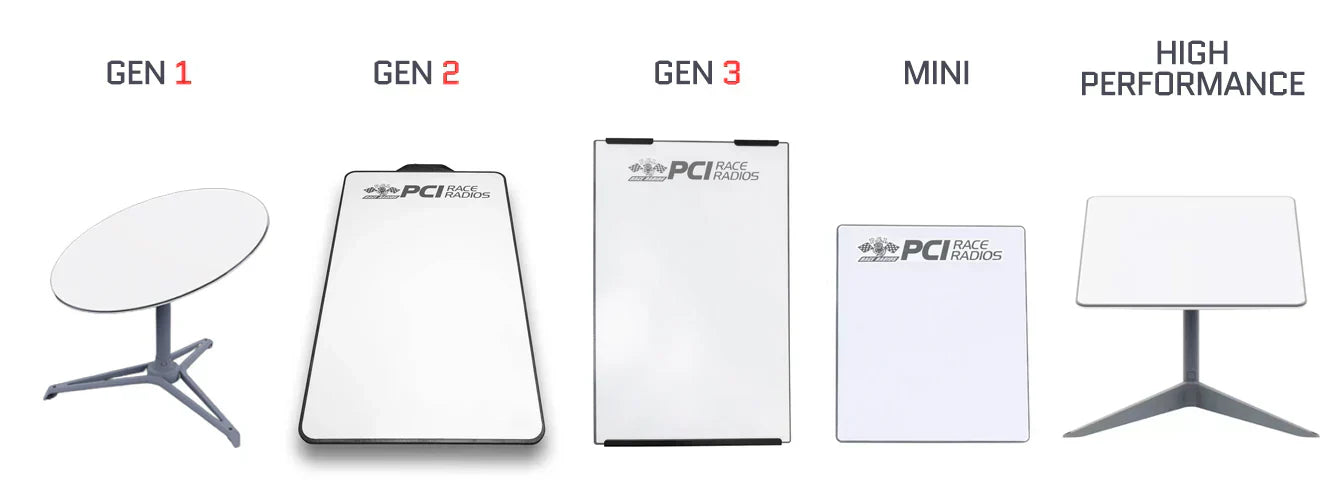
Powering Your Starlink Off the Grid: Cables, Batteries & Backup Tips for Remote Adventures
For off-roaders, overlanders, and remote adventurers, staying connected has never been easier—thanks to Starlink. But a reliable internet connection is only as dependable as your power setup. Whether you're running a base camp in Baja or navigating dusty trails in Moab, having the right Starlink power supply, cable, or battery is critical.
This guide breaks down everything you need to know about replacing your Starlink power supply, choosing the right power cord or cable, and powering your system off-grid with rugged, adventure-ready batteries.
Understanding Starlink Power Requirements
Before diving into cables and batteries, it's important to understand how Starlink draws power:
-
Typical Power Draw: 15-30 watts n Starlink Mini, 50–75 watts for the Standard Dish; up to 110+ watts for the High Performance dish.
-
Voltage: Starlink runs on DC internally, but most units ship with an AC power supply.
-
Cable Type: Starlink uses proprietary connectors that differ which can be frustrating for custom setups.
AC vs. DC: What You Need to Know to Power Starlink in the Wild
Here’s the deal: Alternating Current (AC) is what you get from a standard wall outlet. Direct Current (DC) is what comes from your car battery or portable power station. If you're off-grid (and not running a generator), your rig is likely pushing DC—so anything that needs AC has to run through an inverter or a power supply to make it work.
Take your motorhome, for example. If the generator’s off but you’re still trying to plug into an AC-style outlet, that’s your inverter at work—converting that 12V DC battery juice into 120V AC power.
But when it comes to Starlink, things get trickier.
The Starlink Mini runs on 24 volts. Your vehicle runs on 12 volts. That’s why you need a step-up converter—to safely boost the voltage and give your Starlink what it needs to stay connected. Without the right voltage, you're just spinning your wheels.
💡 Heads up: The Starlink Mini also needs 100 watts of power from a USB port. If you plug it into a basic USB-A or even a lower-watt USB-C, it might look like it’s powering on—but it’ll just sit there cycling the antenna and router, never locking onto signal.
Our recommendation?
Go with a 100W USB power adapter or, even better, one of our battle-tested step-up converters designed specifically for off-road Starlink setups. No guesswork, no lost connections—just plug in and go.
🔌 Know your dish version:
- Gen 1: Round “Dishy” that is 2 feet in diameter with an external router and built in ethernet port.
- Gen 2: Rectangular Dish. Motor driven actuated dish and external router. Needs an ethernet adapter. Often referred to as “standard actuated.” 11.9 x 20.2 inches.
- Gen 3: Large Rectangular Dish. External router with ethernet built in.Often referred to as the “standard” dish. 15 x 23.4 inches.
- Starlink Mini: Small rectangular dish with built in router. Kick stand mount. 11.75 x 10.2 inches.
High Performance (Gen 3): Aluminum case includes integrated router, has a large, advanced power supply that supports AC and/or DC power.

Starlink Power Supply Replacement Options
Power bricks burn out, get lost, or damaged—especially in rough environments. If your dish isn't powering on or the router drops signal under load, it might be time for a Starlink power supply replacement.
Signs You Need a Replacement:
-
Blinking or unlit router LED
-
"Starlink not detected" errors
-
Power cycling at random intervals
Recommended Replacements:
-
OEM replacements (when available)
-
Dependable third-party Starlink-compatible power supplies from
-
Inverter-compatible DC power options
PCI Tip: Choose a unit with voltage regulation and surge protection to handle generator or solar input variability.
Shop Starlink Power Supply Replacements →
Starlink Power Cable vs. Power Cord: What's the Difference?
These terms get tossed around a lot. Here’s how we break it down for Starlink users:
|
Term |
Common Use |
Example |
|
Power Cable |
Dish-to-Router or Dish-to-Power Supply |
Long proprietary cable Starlink includes |
|
Power Cord |
Standard AC Plug |
Cord from power supply to wall or battery inverter |
Why It Matters Off-Road:
-
Longer Starlink power cables allow remote dish placement away from camp
-
Durable power cords help avoid shorts or fraying under vibration
-
PCI offers reinforced, weather-ready cable options for the off-road life
Shop Starlink Power Cables & Power Cords →
Powering Starlink Off the Grid: Battery & Solar Solutions
Now for the fun part—how to ditch the outlet entirely and run Starlink on the go.
3 Ways to Power Starlink Off-Grid:
-
12V Deep-Cycle Batteries
-
Use a 12V-to-48V converter to match Starlink's power needs
-
Ideal for trailers, chase trucks, or fixed base camp setups
-
Portable Power Stations
-
Clean, simple, and solar-rechargeable
-
Check inverter specs: must support 100W continuous at least
-
Direct Vehicle Power
-
Tap into your vehicle's DC system (with fuse protection)
-
Add a switch or relay to avoid battery drain when parked
Key Considerations:
-
Match voltage with a step-up converter if using a 12V battery
-
Use heavy-gauge wire for longer cable runs
-
Weatherproof your connectors and keep spares on hand
PCI-Approved Starlink Gear for Remote Use
We've tested gear in dust, rain, high elevation, and punishing washboard. Here's what passes the PCI test:
Ruggedized Starlink power cables
Inverter-friendly Starlink power cords
Lightweight, solar-ready power stations
Easy-install power supply replacements
From pre-runners to chase trucks, these are the tools we trust when connection matters most.
Shop All Starlink Power Accessories →
Troubleshooting Starlink Power Issues
If your Starlink setup isn’t working right, power may be the issue. Here's a quick field checklist:
🔎 Basic Troubleshooting Steps:
-
Check for frayed or crushed cables
-
Confirm correct voltage and amperage
-
Test alternate power source or battery
-
Reset the Starlink app and watch for error codes
If your setup works at home but fails in the field, the culprit is usually insufficient wattage or bad wiring.
Frequently Asked Questions
Can I power Starlink with a 12V battery?
Yes, but you’ll need a DC step-up converter to provide the required voltage.
What’s the best portable battery for Starlink?
Look for units that deliver 100–150W continuous output.
Can I replace the proprietary Starlink power cable with a regular Ethernet cable?
No. Starlink uses specialized cables with power and data lines combined.
Do I need a surge protector for Starlink?
Highly recommended—especially when using generators or modified sine wave inverters.
Final Thoughts
Off-grid internet is only as strong as your power system. Whether you’re replacing a damaged Starlink power supply, upgrading your cable setup, or building out a full battery-powered Starlink rig, PCI has the gear and field-tested knowledge to keep you connected.
From day runs to 10-day desert missions—power your Starlink the right way.
📞 Need help? Call PCI – we live this stuff.




